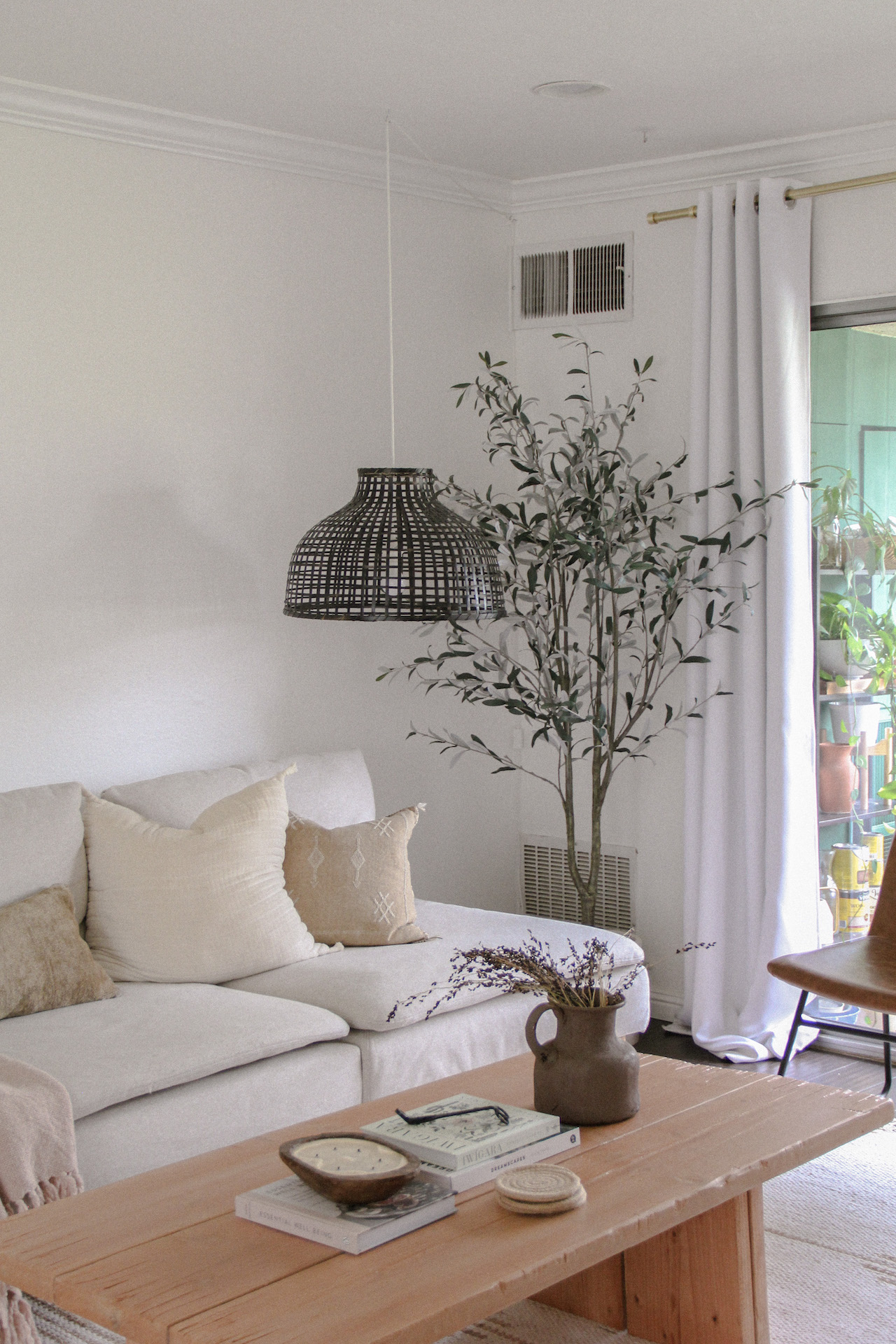Grow a healthy monstera deliciosa –– easier said than done, right? When my friend first gave me a tiny cutting off of her adult monstera, I propagated it in water for a couple weeks until it began to root. It was my first experience with propagation (and real plant care, in general), and I LOVED it.
In just 10 months since propagating that cutting, my monstera looks like this today:
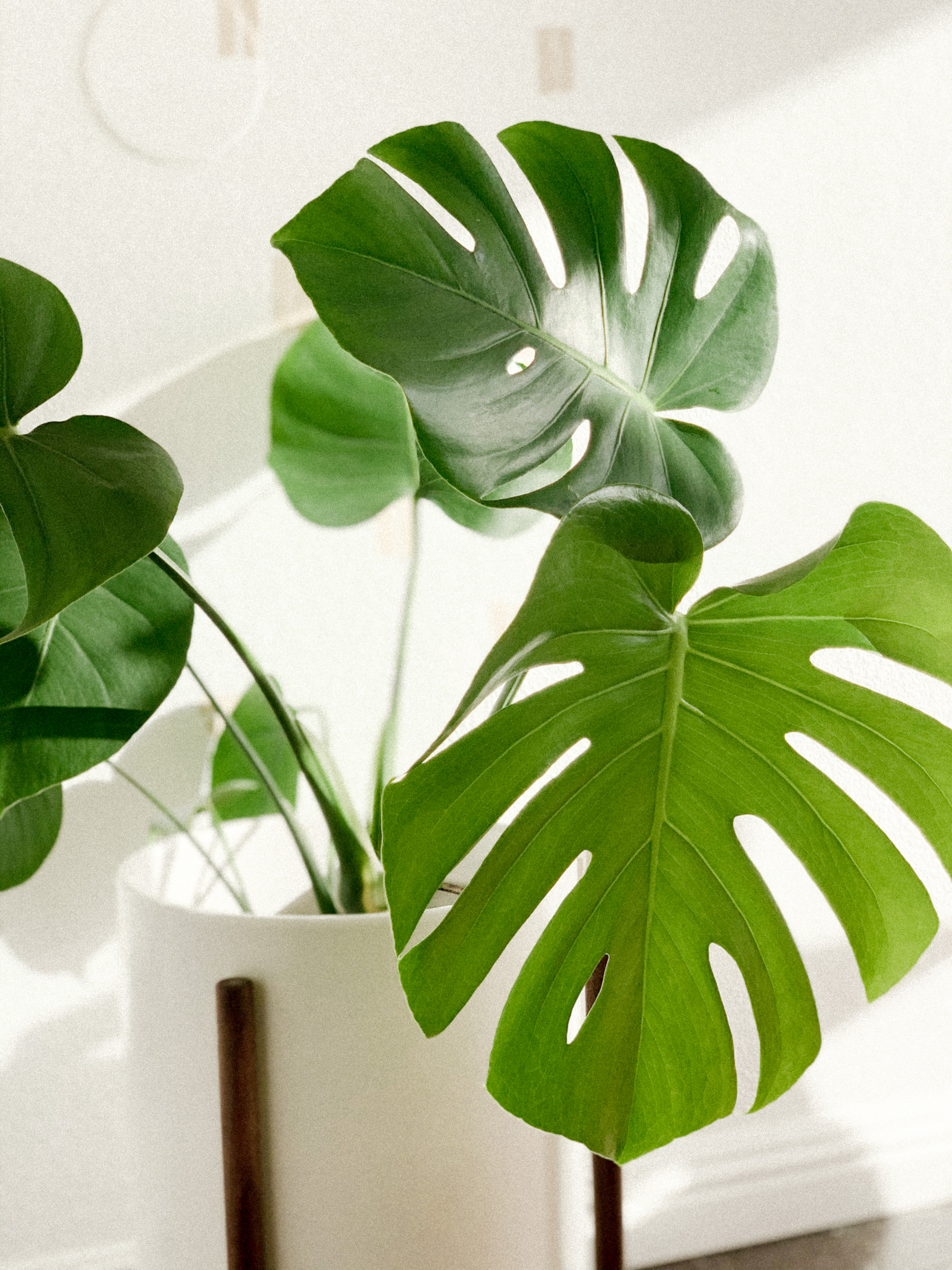
And this is what it looked like when it was just a baby cutting:
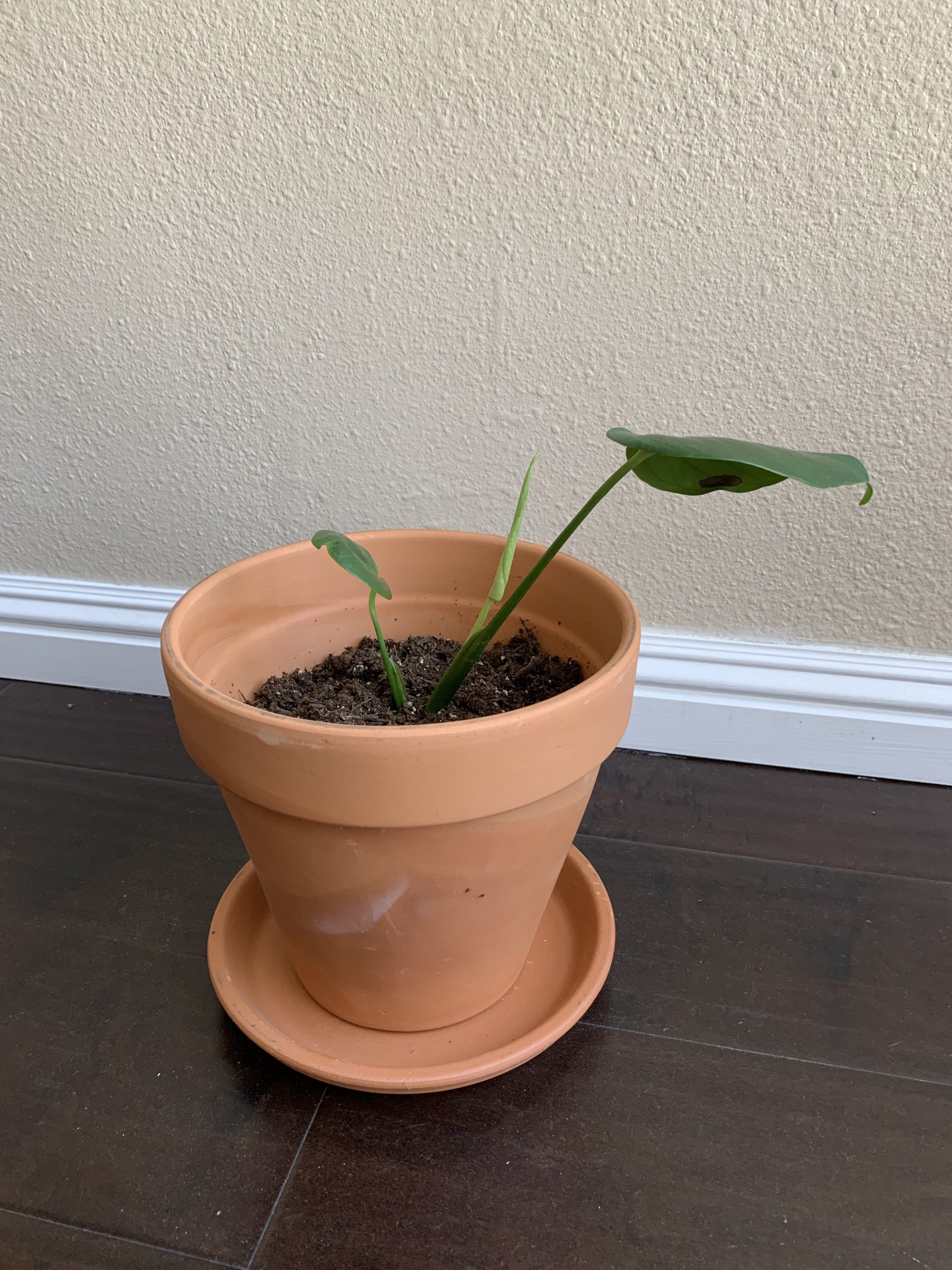
Shocked? Me too! In fact, I wasn’t even expecting any fenestrations (the fancy, scientific word for those holes and splits in the leaves) until it was about at least 1 or 2 years old. But it shows that the proper care and right conditions can give you a healthy, happy monstera in under a year. Here’s how I did it:
1. Give it consistent, indirect sunlight (that’s sometimes also direct).
Monsteras are tropical plants and gravitate towards sunlight. Keeping my monstera near the window in our home that receives the most consistent, regular light has kept it thriving.
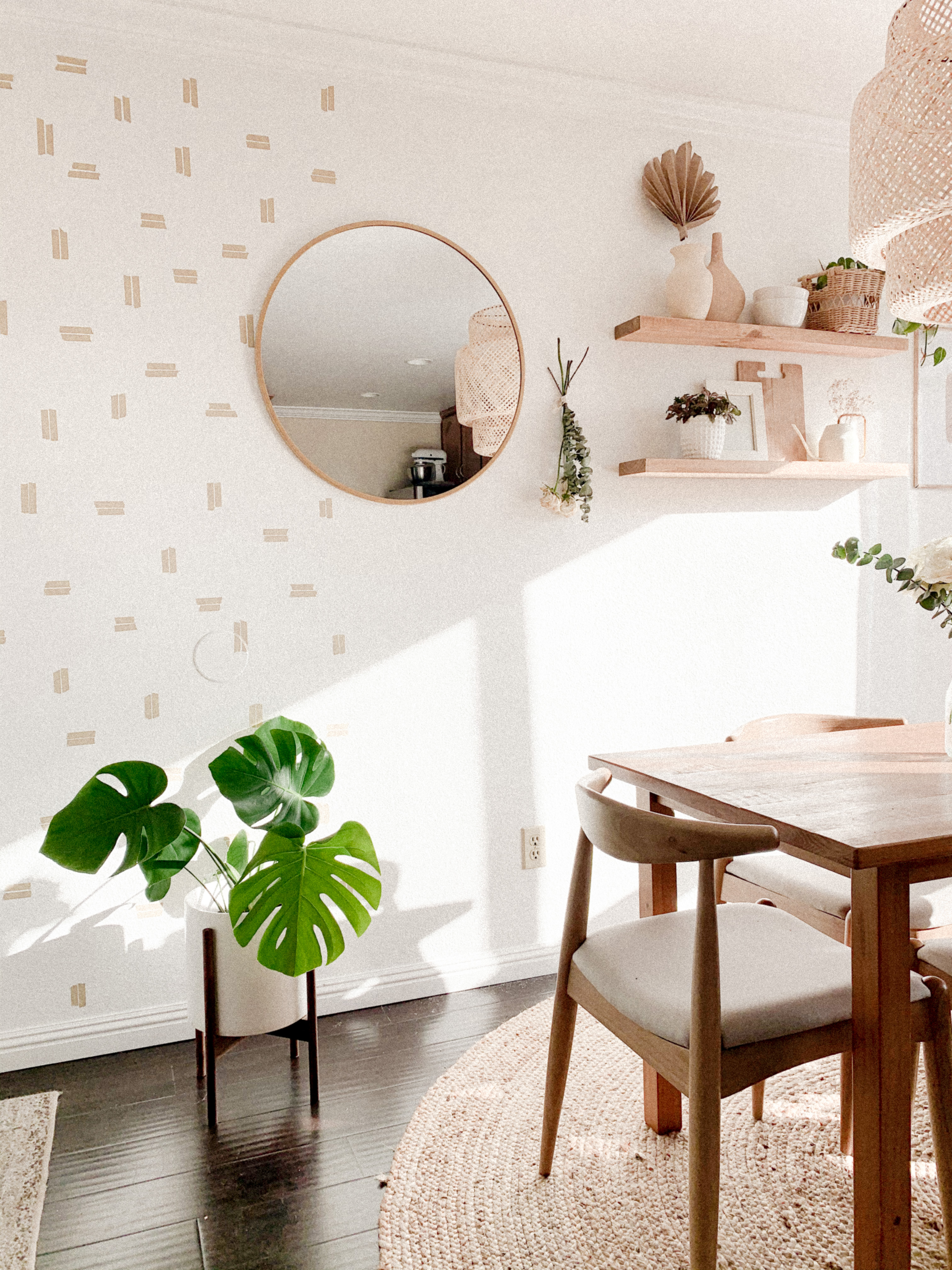
Indirect sunlight is good for when monsteras are younger and still have more delicate, thin leaves (you don’t want them to burn!). But as they grow older and their leaves grow sturdier, they love a few hours of direct sunlight throughout the day.
Consistent sunlight is also the reason my newer leaves have fenestrations. The splits occur to allow light to hit the leaves underneath. If you’re giving your monstera enough light, it’ll split to share the light with other leaves 🙂
2. Grow a healthy monstera by watering only when it’s dry.
Monsteras don’t want to be abandoned/deprived by any means, but they also don’t want you to fuss over them constantly. Giving it water the moment you think it feels dry is a massive mistake.
So how often should you water? Depending on the season, weather, and sunlight your plant is getting, your watering times will vary. My rule of thumb is to never set a “watering day”. Your plants absorb water at different rates based on so many factors. Don’t give a monstera water just because it’s Saturday. Give it water because it needs it.

Wait until your monstera is dry several inches past the surface of the soil. If it even feels a little damp still, don’t water. I say this from personal experience –– my monstera was infested with fungus gnats when it was about 4 months old. The infestation occurred due to overwatering, and I ultimately had to rinse the roots and repot it in new soil entirely (you can also use neem oil to remedy this if the infestation is not severe yet). I almost lost my monstera to this incident, so now I stay far away from overwatering (not to mention most plants will bounce back from underwatering, but might not with overwatering).
3. Use a pot with good drainage.
In the same vein, to keep your monstera from having “wet feet” (roots that get soggy and stay damp), make sure it’s always in a pot with good drainage. Nursery pots, terracotta pots, and any pot with a hole (or several holes) that’s level at the base will work. When you water, you also want to make sure that you water enough so that the roots receive a drink. Then, keep the pot outside, in the sink, or in the bathtub to let all the excess water drain out.
4. Wipe down the leaves and keep them clean.
A dusty, dirty monstera is not a happy one. I use a damp paper towel to gently wipe down the leaves and stalks at least once a week. This keeps their leaves breathable and also gives you a chance to regularly monitor for any pests or plant issues.
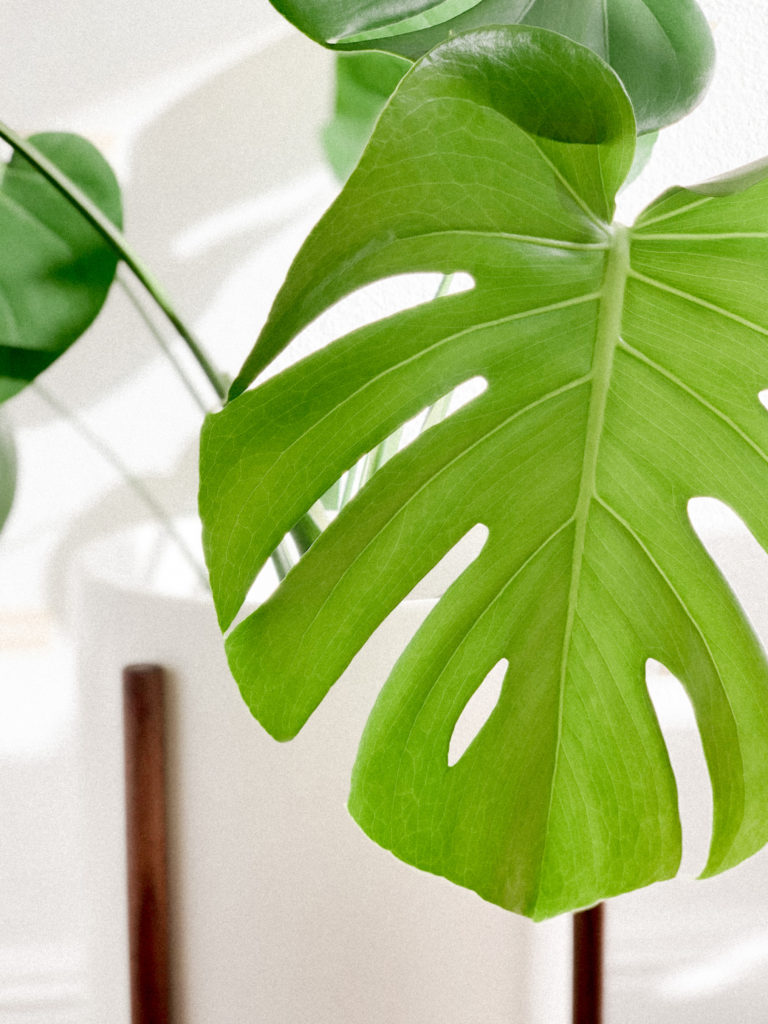
5. Grow a healthy monstera by…misting!
As I’ve mentioned earlier, monsteras are tropical plants, meaning they’re used to humid conditions and they like them! If you live in a dryer climate or notice particularly hot/dry weather during a certain week or season, use a mister to add some humidity back into the air for your monstera. I don’t mist obsessively –– just when I think it needs a little ✨pick-me-up✨.
6. Repot when its roots outgrow.
If you’re doing everything right, but your monstera isn’t giving you any new leaves, consider repotting. It might have outgrown its current home. My monstera stopped new growth for almost three months. I was confused because it was completely healthy and showed no signs of infestation or illness. Then I realized its roots were stuck and had no new space to grow, thus stunting growth for new leaves.
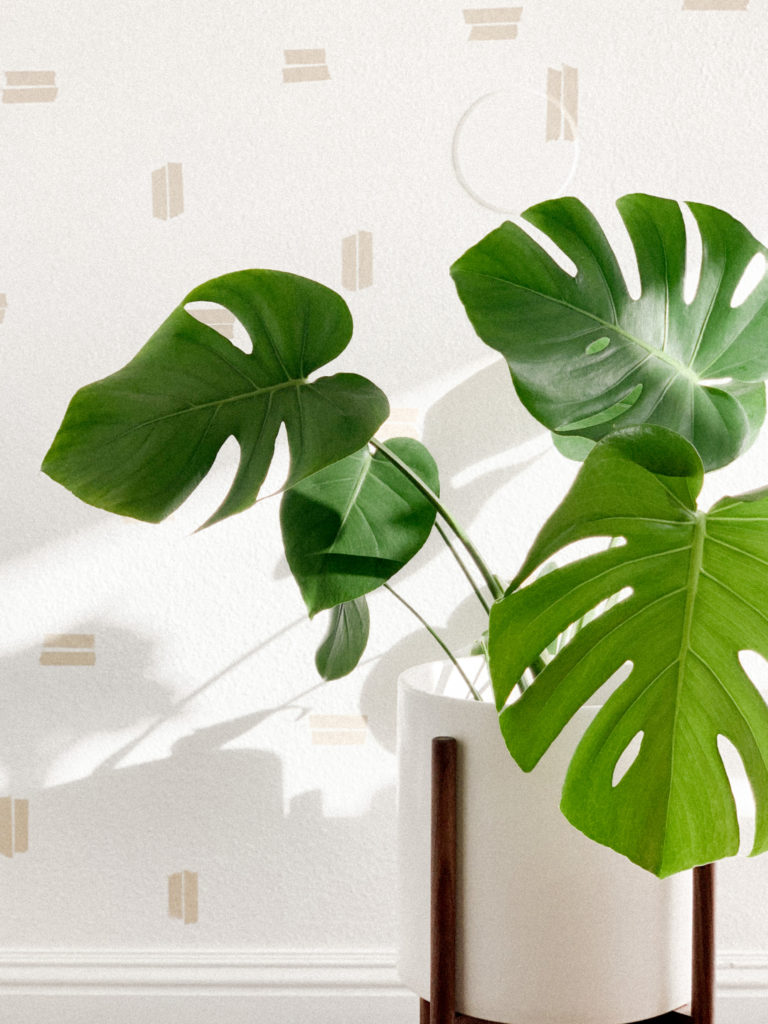
So, repot to a slightly bigger pot as your plant grows. A new leaf started sprouting just days after I did!
Some final thoughts.
I haven’t included several other common tips because I’m not currently doing them. I have never fertilized, for example, which I know is a huge no-no in the plant community 🙊 There isn’t any reason I haven’t done it yet, but as you can see, my plant’s growth hasn’t suffered because I haven’t. If you’re interested in learning more about fertilization, I encourage you to do your own research! Every plant situation varies, and while mine doesn’t seem to need it right now, yours might!
I also don’t have a moss pole yet. Monsteras love to climb and do start to grow some crazy aerial roots as they get bigger. A moss pole keeps the plant centered and sturdy so that it isn’t leaning too far to the sides. A moss pole is definitely in our future, but for now I rotate the plant and make sure all sides are getting sunlight so that there aren’t any leaves desperately reaching for light.

All in all, I absolutely love this plant. Even for a beginner plant mama, I managed to keep it growing and now it’s my pride and joy!
If you have questions about monstera care, please leave them in the comments or send me a message on Instagram @rachlvalente. I wish you all the best with your plants –– you got this!
xo, rachlv.
p.s. check out my other post about 5 Easy Plants for the Houseplant Beginner!


